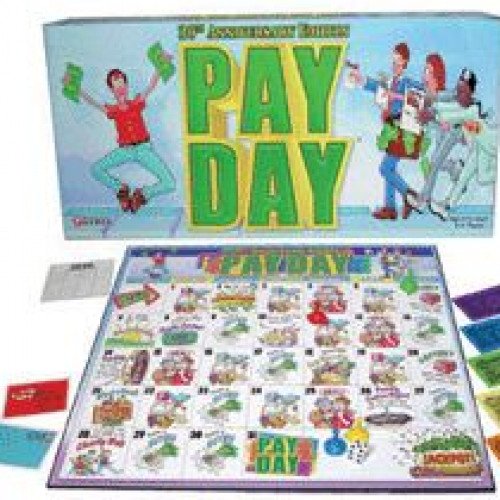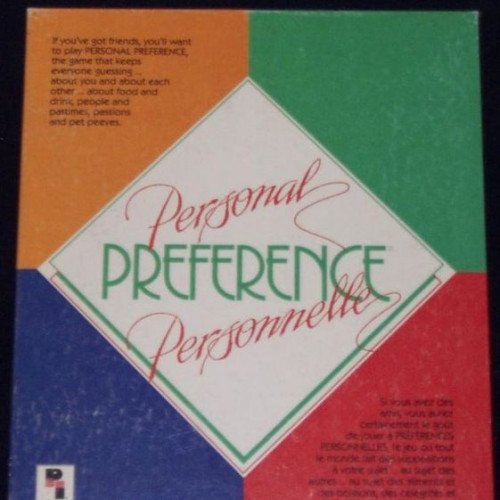"PAY DAY" vs "PERSONAL PREFERENCE"

PAY DAY
Pay Day is a board game originally made by Parker Brothers (now a subsidiary of Hasbro) in 1975. It was invented by Paul J. Gruen of West Newbury, Massachusetts, United States, one of the era's top board game designers, and his brother-in-law Charles C. Bailey. It was Gruen's most successful game, outselling Monopoly in its first production year. Pay Day is currently marketed by Winning Moves Games USA. The game simulates money management, with the game board resembling a calendar month. Before the game, the players decide how many months to be played (i.e. how many times to travel across the board). During the game, players accumulate bills and expenses to pay, along with collecting their monthly wage on "pay day" at the end of the month. The winner is the player who has the most money at the end of the last month of play. The object is to be the player who has the most cash and savings at the end of the game. The length of the game is decided by the players. With four players, a 3 month game takes about an hour and a 6 month game takes about 2 hours.
Statistics for this Xoptio

PERSONAL PREFERENCE
Personal Preference is a 1987 board game created by Donal Carlston that involves guessing the order in which a player prefers foods, activities, people, and other items compared to one another. The game was published by Broderbund in the United States, Playtoy Industries in Canada, and Parker Brothers International in Britain. The game contains cards in four categories: Food & Drink, Activities, People, and Potpourri (miscellaneous). Each card has a photo or drawing on each side and text indicating what that side represents (e.g., chocolate éclairs, climbing a mountain, Harrison Ford, spy novels). Each round, one player draws four cards from one category, or one from each category, depending on the player's position on the board. Each card is placed in a colored quadrant of the board. The player then ranks these four items according to his or her preference using color-coded cards that are placed in an envelope. Next, other players (or teams) use numbered tiles to guess that player's order, and move forward one space for each correct guess when the order is revealed. If players choose to double a guess by placing a tile towards the center of the board, they move forward two spaces if correct and back one space if incorrect. Players take turns drawing and ranking cards until someone reaches the end of the board.